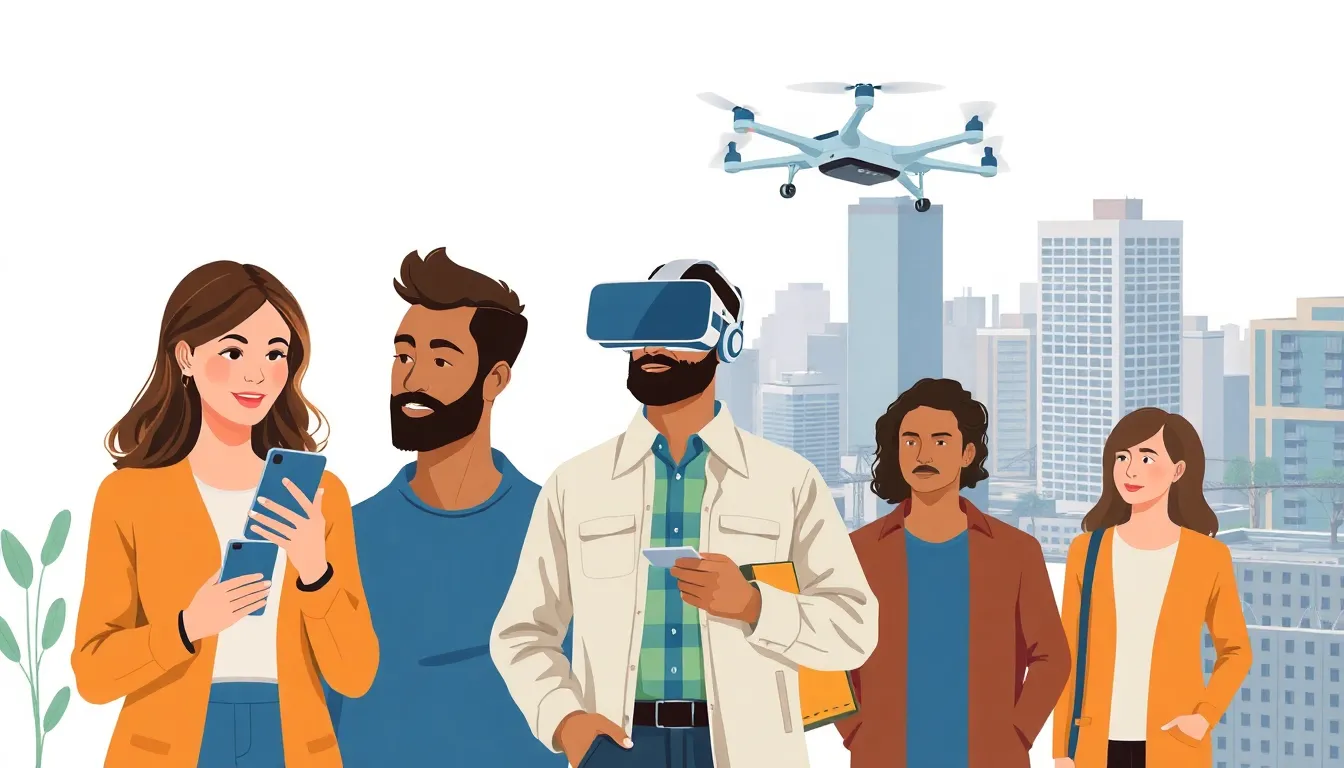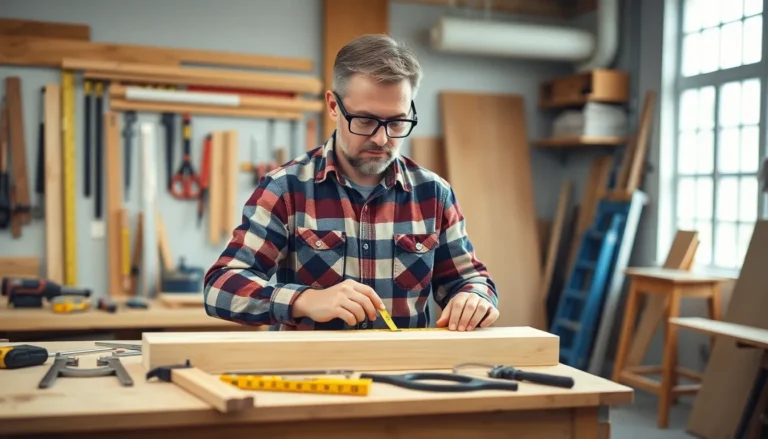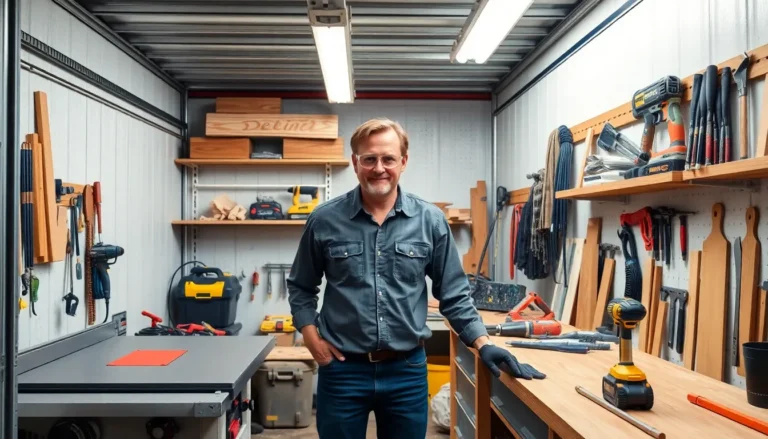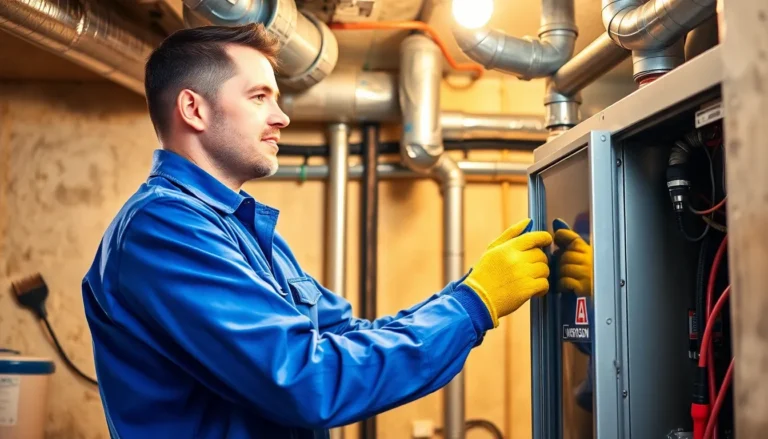Table of Contents
ToggleIn a world where the only constant is change, moving trends are evolving faster than a cat chasing a laser pointer. From minimalist living to eco-friendly packing, today’s movers are embracing new ideas that make relocation feel less like a chore and more like an adventure. Who knew packing could be as trendy as the latest TikTok dance?
Overview of Moving Trends
Modern relocation reflects significant shifts in preferences and practices. Increased focus on minimalist living drives many individuals to downsize their belongings. Eco-friendly practices also shape perceptions, with recycled packing materials gaining popularity. Individual movers now seek sustainable solutions that align with their values.
Speed and convenience play crucial roles in contemporary moving trends. Technology integration streamlines the process, enabling online bookings and virtual consultations. Users benefit from apps that connect them with local movers, simplifying the search for assistance.
Innovation in packing solutions enhances the experience. Smart packing strategies, like using wardrobe boxes, eliminate confusion and save time. Many movers embrace customizable moving kits that cater to unique situations and requirements.
Minimalism influences design choices in new living spaces. Individuals prioritize multifunctional furniture to maximize available areas, often opting for stylish yet practical solutions. Savings in space directly impact the overall moving experience, making transitions smoother.
Social media platforms amplify these trends. Online communities share tips, tricks, and moving experiences, fostering a sense of belonging. Peer recommendations play a vital role in defining what products and services are considered top-notch.
Shifts in remote work culture also contribute to evolving relocation patterns. More jobs offer flexible arrangements, prompting people to move from urban areas to suburban or rural locations. Changes in housing preferences reflect broader societal transformations.
Technology in Moving Trends

Technology transforms the moving process significantly. Individuals now utilize digital tools to enhance efficiency and convenience.
Impact of Digital Tools
Digital platforms streamline the entire moving experience. Users book moving services online, making it easier to compare options. Apps connect customers with local movers, facilitating faster communication. Additionally, tracking tools provide real-time updates on shipment statuses. Virtual inventory management allows for efficient packing and organization. Many movers incorporate augmented reality applications to assist users in visualizing their new spaces. Such innovations not only save time but also reduce stress during the relocation process.
Innovations in Transportation
Innovations in transportation also shape moving trends. Electric vehicles provide eco-friendly options for relocations. Many moving companies invest in cargo drones for quick and efficient deliveries. The emergence of modular trucks enhances load capacities while reducing environmental impacts. Advanced logistic software ensures optimal route planning, which improves delivery times. These transportation advancements lead to shorter move durations and lower carbon footprints, aligning with the growing demand for sustainable practices in relocation.
Sustainability and Moving Trends
Sustainability has become a core focus within the moving industry. Movers increasingly adopt eco-friendly solutions that align with environmentally conscious values.
Eco-Friendly Practices
Recycling materials forms a crucial part of modern moving practices. Companies utilize biodegradable packing peanuts, recycled cardboard boxes, and compostable tape. Utilizing such materials helps minimize waste and supports environmental preservation. Additionally, movers often encourage clients to declutter before packing, allowing individuals to donate unused items or recycle them. Embracing these practices not only promotes sustainability but also creates a more organized moving experience.
Carbon Footprint Reduction
Reducing carbon footprints plays a significant role in current moving trends. Electric vehicles have started replacing traditional gas-powered trucks, lowering greenhouse gas emissions. This shift allows families and businesses to move with minimal environmental impact. Furthermore, using software for optimized route planning helps minimize fuel consumption. Streamlined logistics lead to quicker, more efficient moves while significantly cutting down on energy use. Together, these strategies support a collective goal of creating a more sustainable future within the relocation sphere.
Consumer Behavior in Moving Trends
Modern consumers exhibit distinct preferences and choices when relocating. Minimalist lifestyles drive individuals to seek smaller, more functional living spaces. Many prefer eco-friendly options, opting for recycled packing materials and sustainable moving practices. Homeowners prioritize multifunctional furniture that maximizes utility while reducing clutter. Flexibility becomes essential, as remote work encourages moves to suburban and rural areas. Individuals consider proximity to amenities and community features when selecting new locations.
Preferences and Choices
Preferences in moving create trends that reflect a more conscious lifestyle. Individuals increasingly favor moving services that prioritize sustainability. Customizable moving kits attract those seeking a tailored experience. Unique packing solutions, like biodegradable materials, cater to environmentally aware customers. Easy access to online resources helps people compare options quickly, making informed decisions. User-friendly interfaces enhance the overall experience by simplifying bookings and organizing logistics.
The Role of Online Reviews
Online reviews play a crucial role in shaping consumer choices during moving. Trust in peer recommendations influences decisions on service providers. Potential movers often seek information from social media platforms to gauge satisfaction levels. Positive reviews elevate a mover’s reputation, while negative feedback can deter potential customers. Users frequently check ratings before committing, reflecting a strong desire for reliability. Engaging with customer feedback online fosters transparency and builds trust in the market.
Future Predictions for Moving Trends
Emphasizing sustainability, the moving industry is likely to embrace more eco-friendly practices in the coming years. An increased number of businesses may adopt biodegradable packing materials and recyclable boxes, addressing the growing demand for environmentally conscious solutions. Innovations in electric vehicle technology will likely replace traditional transport methods, resulting in reduced greenhouse gas emissions and a smaller carbon footprint during relocations.
Furthermore, advancements in logistics software may enable real-time tracking and optimized route planning for greater efficiency. Enhanced communication between movers and clients could streamline the entire moving process, reducing stress and improving overall experience. Customizable moving kits are expected to rise in popularity, offering tailored solutions that meet individual needs.
Remote work will continue to shape moving trends, as suburban and rural areas become more attractive. Increased flexibility prompts individuals to seek larger living spaces that accommodate home offices and promote a balanced lifestyle. As a result, community features and amenities might heavily influence relocation decisions.
Social media will likely play a pivotal role in shaping perceptions of moving services. Users may rely more on online reviews and peer recommendations for selecting providers, making trust and reputation essential components for success in the market. Savvy consumers are expected to prioritize companies that emphasize transparency and customer satisfaction.
Collaboration with technology firms may further enhance the moving industry, as virtual reality applications provide clients with space visualization. Allowing customers to visualize new environments could significantly reduce anxiety related to relocation. Overall, future moving trends will reflect a strong commitment to sustainability, efficiency, and consumer-centric services.
The landscape of moving trends is evolving rapidly as sustainability and technology take center stage. Embracing eco-friendly practices and innovative solutions not only enhances the moving experience but also aligns with contemporary values. As individuals increasingly prioritize minimalism and functionality, the demand for customizable services continues to rise.
The integration of digital tools streamlines the moving process while fostering greater transparency and reliability among service providers. With remote work shaping relocation preferences, a shift towards suburban and rural living is evident. The future of moving will undoubtedly reflect a commitment to environmental responsibility and consumer-centric practices, ensuring a more efficient and enjoyable experience for everyone involved.




